Feed Your Soul: Plant a Cutting Garden
Enjoy backyard bouquets from spring to fall
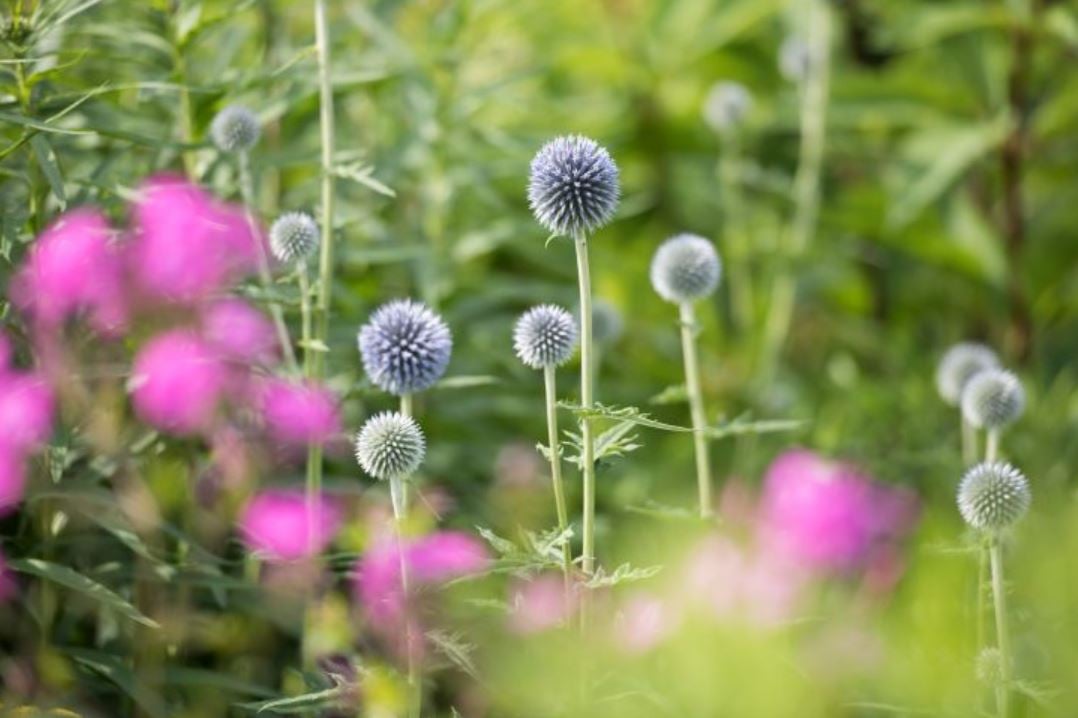
For most gardeners, assembling a bouquet of flowers is a great pleasure. Walking through the garden selecting blooms, we get to appreciate the plants in a new way, while slowly putting together a beautiful and completely unique bouquet. From the first daffodils of April until the last mums in November, it's a joy to pick a little of whatever is in bloom and bring it into the house — or share those bouquets with family, friends, workmates and anyone who could use a lift.
There's no shortage of flowers in my perennial gardens, but it wasn't until I planted a cutting garden that I felt like I had plenty for bouquets. That's partly because I find it hard to cut the flowers in my perennial borders. Every one of them seems to play a part in creating the total picture. I also find it challenging to combine the bold blooms of peonies, delphiniums, lilies and bearded iris, into casual mixed bouquets.
In my cutting garden, I can walk through the rows, picking anything in sight. When I'm done, I invariably have an instant, no-fuss bouquet. Because these flowers are annuals, cutting them often is helpful — and even necessary — to keep the plants blooming until frost.
My cutting garden is divided into five 2.5 ft. x 32 ft. long raised beds. The paths are lined with landscape fabric to stifle weeds. I plant the beds themselves so densely that after one early-season weeding, there's not a spare inch room for weeds to grow.
It takes about 300 plants to fill a cutting garden of this size, which is why I start almost everything myself from seed. Growing from seed also allows me to grow many varieties that are difficult if not impossible to find at local nurseries. The seeds usually get sown in 6″ x 10″ fiber flats. Once the seedlings have one or two sets of leaves, I transplant them into six-packs or any little pots that are 2″ or 3″ in diameter. When these transplants get set out into the garden mid-May, I usually plant several compatible varieties in each row; they help support one another and by midsummer, every bed resembles a living bouquet.
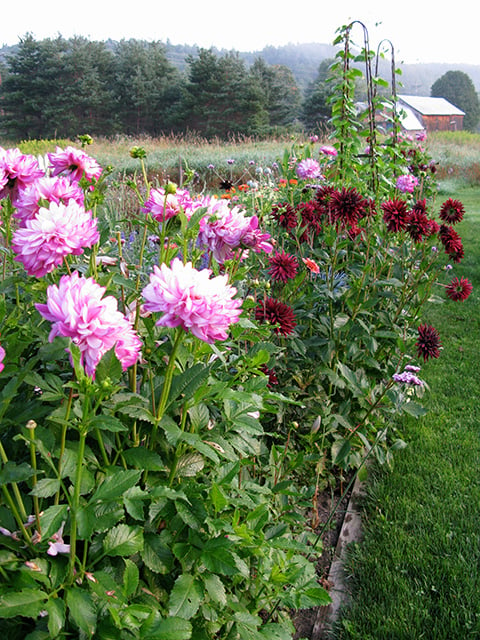 Dahlias are a staple of my cutting garden. One year I featured just two varieties: Who Dun It and Black Narcissus.
Dahlias are a staple of my cutting garden. One year I featured just two varieties: Who Dun It and Black Narcissus.12 Easy-Care Favorites for the Cutting Garden
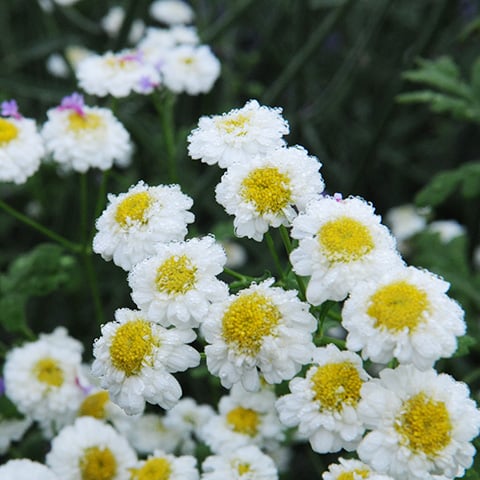 Feverfew (Tanacetum parthenium 'White Wonder')
Feverfew (Tanacetum parthenium 'White Wonder')Feverfew (Tanacetum parthenium 'White Wonder'): Snow white, 1/2" diameter mum-like flowers in clusters on strong, 18" stems. Nice foliage. Long vase life. The ultimate bouquet filler.
Ageratum 'Blue Horizon': Purple-blue, fuzzy umbels on sturdy, 24" stems. Available in white and rose as well, but I find the blue to be the strongest performer.
Antirrhinum 'White Rocket': Every few years I try growing snapdragons in mixed colors, but I always go back to white. Elegant on their own, the flowers are also good mixers.
Zinnias: These are the backbone of any cutting garden. I usually plant several colors of the large and colorful Benary's Giant (and always include the lime-green Green Envy). For smaller bouquets, plant Lilliput or Sunbow.
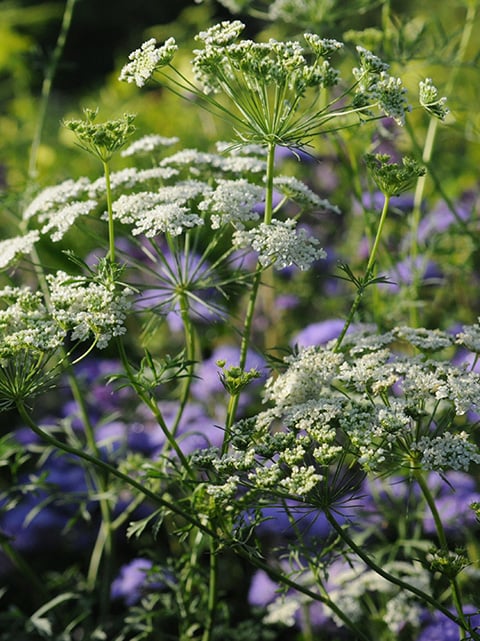 Bishop's lace (Ammi majus)
Bishop's lace (Ammi majus)Bishop's lace (Ammi majus): This looks much like wild Queen Anne's lace, but it's more delicate and makes a fantastic filler, weaving most any flowers into a professional-looking bouquet.
Phlox drummondi 'Tapestry': This mix includes a dozen different old-fashioned color combinations that remind me of the faded, 1940s-era aprons worn by farm wives throughout the Midwest. They don't last very long in a vase, but you'll be hooked once you grow them.
Asters: Annual asters hate my heavy clay soil and often die out by mid-August, yet I always plant a few. If you can grow asters successfully, you'll find they're one of the best cut flowers around.
Dahlias: Buy new tubers in the early spring or dig and save your own from year to year. Choose a variety of sizes and heights, and be sure to stake the plants well, as they're likely to reach 4 feet tall.
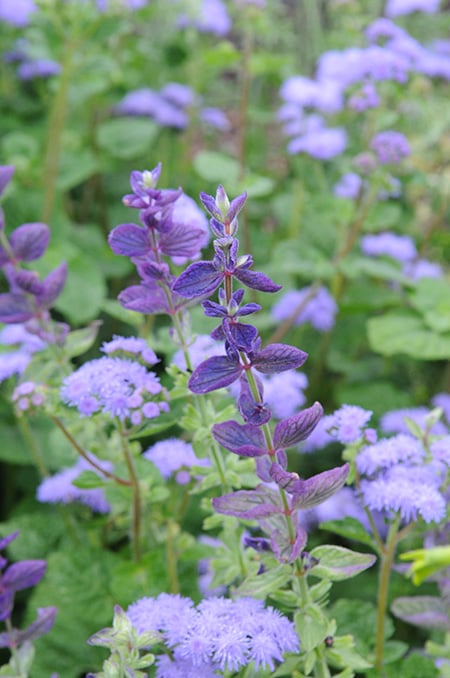 Clary sage (Salvia viridis) and Ageratum 'Blue Horizon'
Clary sage (Salvia viridis) and Ageratum 'Blue Horizon'Clary sage (Salvia viridis): A great plant that produces deep purple, pink, or white bracts. The stiff stems add a good vertical line when cut, the cut flowers last for weeks in a vase. Frost hardy.
Euphorbia marginata 'Kilimanjaro': This annual is grown for its showy green and white foliage. Makes a great filler.
Centaurea 'Jubilee Gem': A deep-blue bachelor button with a stocky, upright form.
Sunflowers: If you don't have room for a row of sunflowers, just plant a few here and there around your garden. Since I grow sunflowers with cutting in mind, I usually plant multi-stem varieties with slightly smaller blooms, such as Italian White.
Tips for Success
- Start your own seedlings. You'll get to grow all the best varieties and have an abundance of seedlings for yourself and to share.
- Pick your flowers often; the more you pick, the more flowers the plants will produce.
- Have more flowers than you can handle? Pick an extra bouquet or two and drop them off at an elderly housing center, hospital, or hospice. It's easy for gardeners to forget what an impact a simple bouquet flowers can make.
- At planting time, amend the soil with granular, all-purpose fertilizer, preferably organic.
- Apply a liquid fertilizer, such as Plant Health Care, once each month during the growing season.
- From midseason on, keep at a dozen or more 3 ft. bamboo stakes handy for propping up plants as needed.
- No room for a big cutting garden? You can squeeze about 20 plants into a 3 ft. x 6 ft. raised bed.
Print this Article:
Get the Dirt
Stay up to date on new articles and advice. Please fill out the information below.
